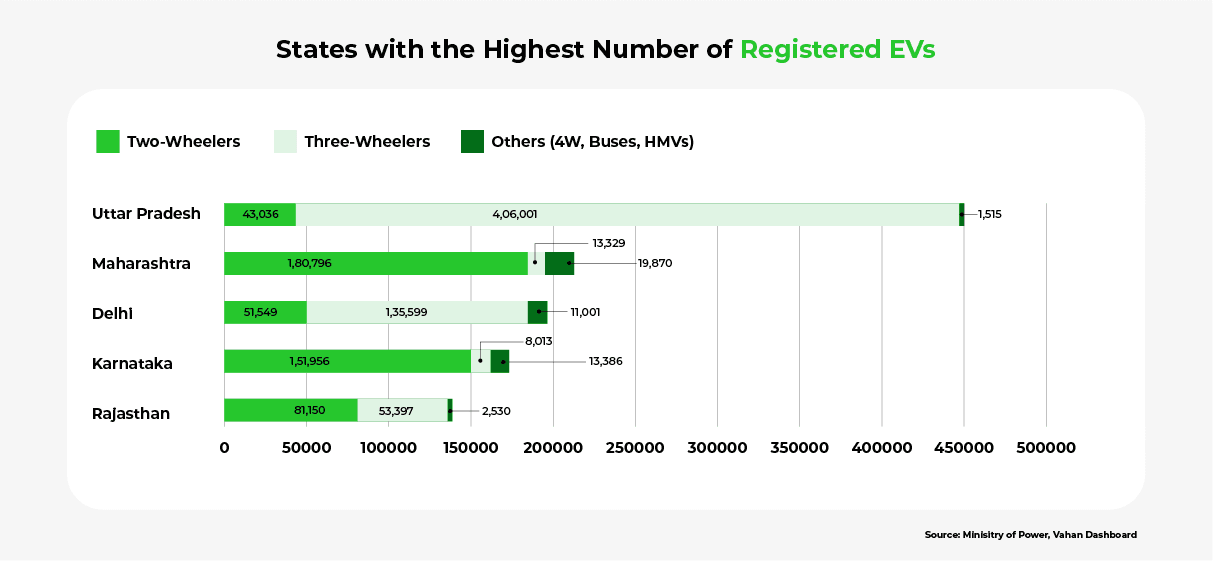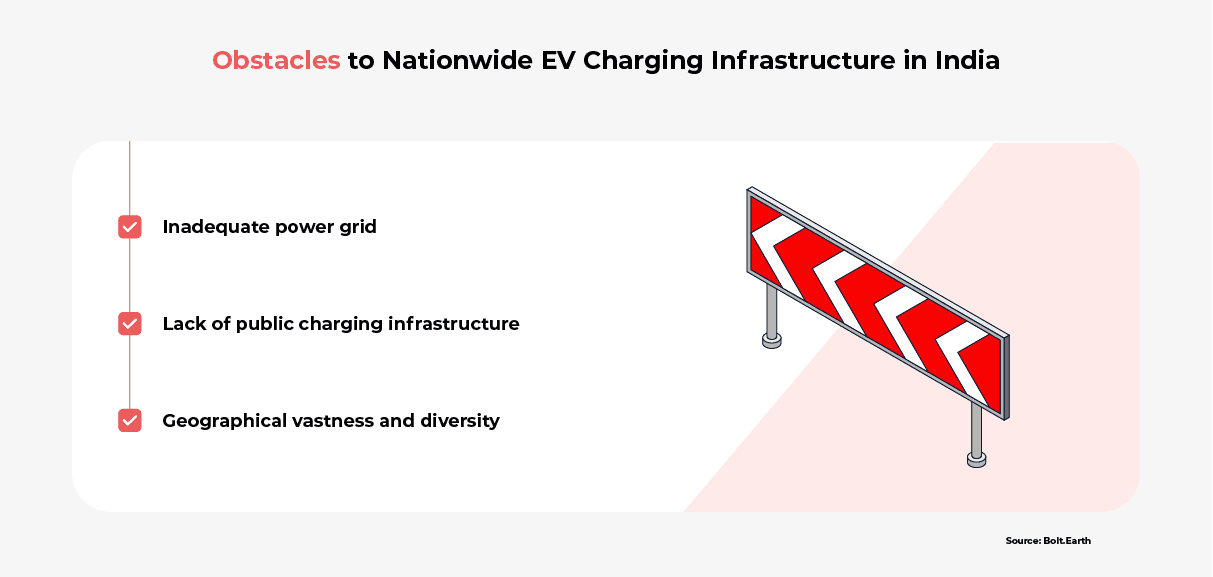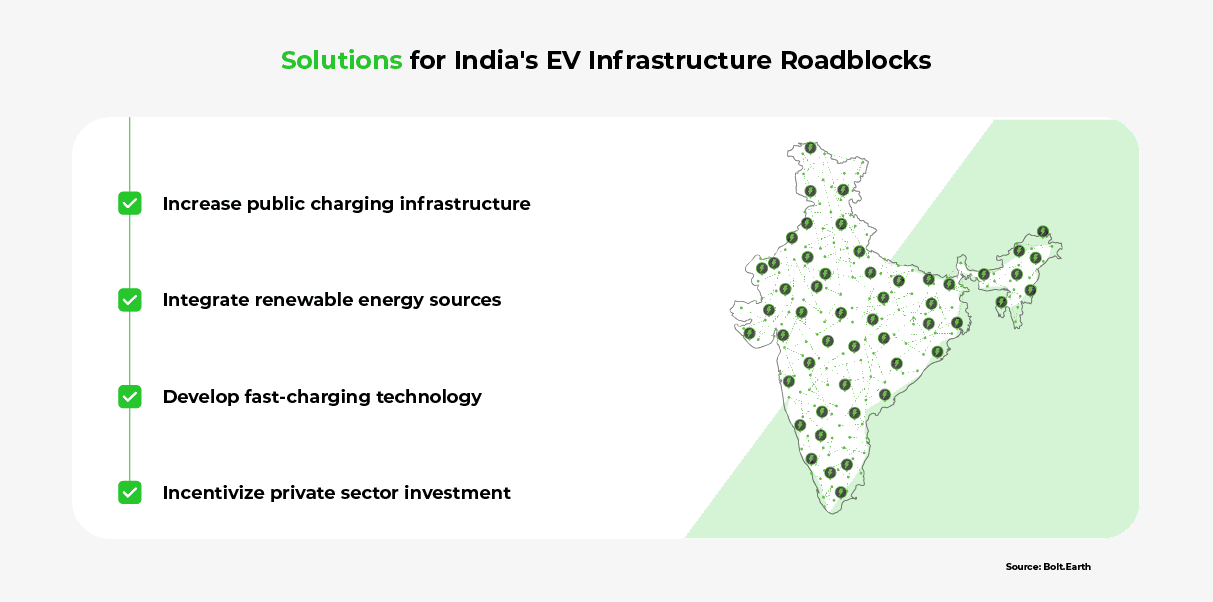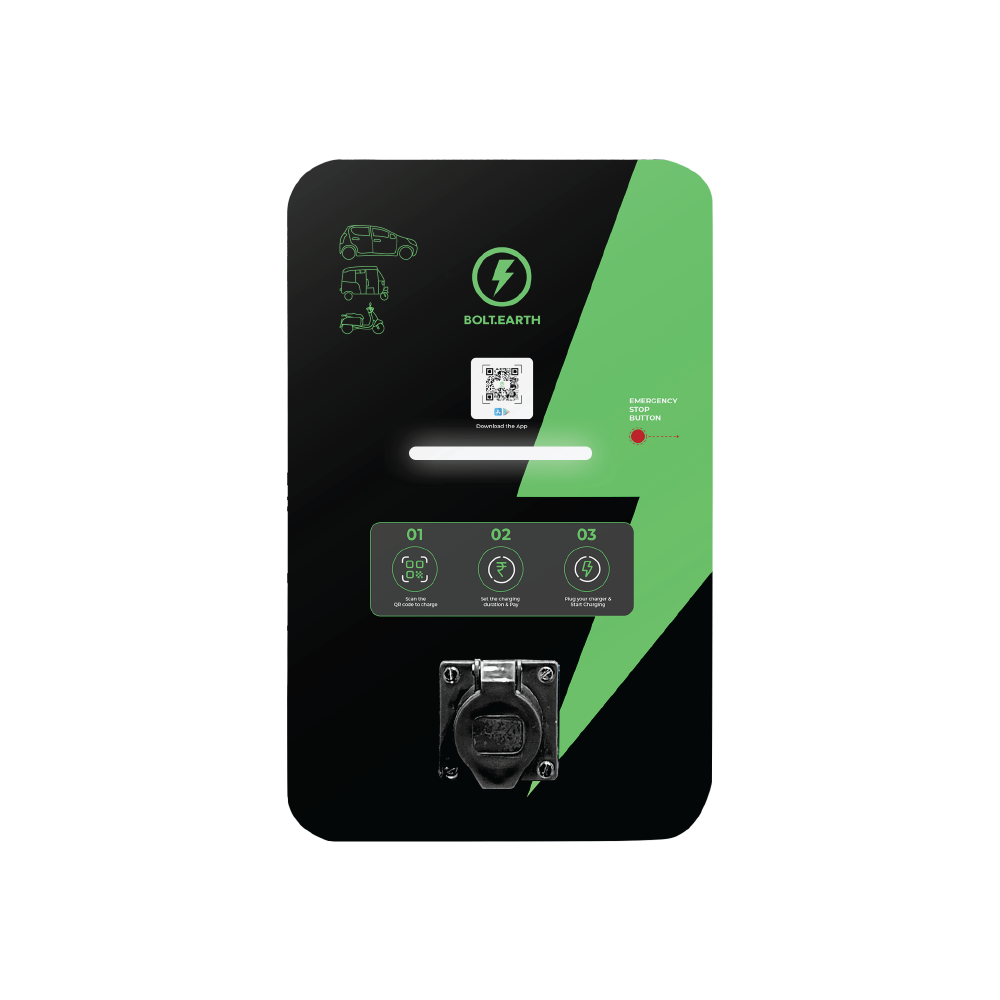EV Infrastructure in India: What to Expect By 2030
Raghav Bharadwaj
Chief Executive Officer
Published on:
20 Jun, 2023
Updated on:
03 Nov, 2025

The Indian government aims to have EVs comprise 30% of new private vehicle registrations, amounting to 8 crore EVs, by 2030. To support this dramatic rise in EV adoption, India will need a total of 39 lakh public and semi-public charging stations, for a ratio of 1 station per 20 vehicles.
The current ratio — approximately 1 charging station per 135 EVs — is significantly lower than the global ratio of 1 charging station per 6 to 20 EVs; this shortage in charging stations could push India to be 40% behind its EV 30@30 vision.
To remedy this, the government has implemented a series of policies and incentives related to EV charging infrastructure, which affects all stakeholders in the EV ecosystem.
- To promote a better understanding of how EV charging infrastructure can shape India’s electric mobility by 2030, this article addresses the following questions:
- Why does India need to prioritize the development of its EV charging infrastructure?
- What is the current state of EV charging infrastructure in India, and what challenges does the country face in implementing widespread EV charging infrastructure?
- How does the government plan to improve EV charging infrastructure by 2030?
Electrifying India’s Mobility: Preparing for 2030
India’s charging infrastructure requires urgent attention. A robust nationwide charging network is crucial to promoting ongoing electric vehicle adoption in India, both because it can help EV owners charge their vehicles quickly and conveniently, and, even more critically, because it will eliminate drivers’ concerns about running out of charge. This is key because range anxiety is still a primary deterrent against EV adoption.
The Indian government has launched many EV charging infrastructure initiatives. Most notably, the Faster Adoption and Manufacturing of (Hybrid &) Electric Vehicles (FAME) scheme provides incentives for EV adoption and charging infrastructure growth. The government has further accelerated EV adoption by setting up the National Electric Mobility Mission Plan (NEMMP), which incentivizes EV purchases.
However, the success of these government initiatives for charging infrastructure depends on private sector investment. The government alone cannot create a robust and extensive charging network on its own. Private sector players, including charging infrastructure providers and resident welfare associations (RWAs), should contribute to charging infrastructure development as well.
Private sector investment may have the additional benefit of fostering innovative business models such as battery swapping and smart charging, which can make charging more affordable and convenient for EV owners. This, however, may be easier said than done.
Identifying EV Infrastructure Roadblocks in India
India has set an ambitious goal: electrifying the transportation sector by 2030. To meet this target, India will need a total of 46,000 charging stations across the country. The current state of EV infrastructure in India is depicted below:

As the above image shows, India’s EV charging infrastructure is unevenly distributed. Furthermore, there is a significant discrepancy between the current number of EVs and the existing charging stations. For example, the state of Uttar Pradesh has 4.5 lakh EVs, but 406 charging stations — only one station for every 1,103 EVs!

Unfortunately, the solution to this problem is not as easy as building more charging stations. For example, private sector players like SMB owners and RWAs complain about the high costs of charging stations, which discourage them from participating in charging infrastructure opportunities.
Below, we analyze three reasons why India’s EV infrastructure is currently unable to flourish.

1. Inadequate Power Grid
India’s growing power demand, which is expected to increase by 9-12% in the first half of 2023 alone, has already put the power grid under significant strain. Adding EVs to the grid can exacerbate this, which will result in frequent power cuts. This is especially true for rural areas.
This power shortage can, in turn, discourage EV adoption by reducing prospective EV owners’ confidence about being able to reliably charge their vehicles. Reduced consumer confidence also discourages private sector investment in EV infrastructure.
2. Lack of Public Charging Infrastructure
The Bureau of Energy Efficiency (BEE) expects 46,397 public charging stations to be built across 9 cities by 2030. Currently, however, India only has 5,234 stations scattered across the land.
Despite the push from the government, retail stores, small business owners, and RWAs may still be hesitant to provide public charging stations at their premises. They are concerned about the significant capital these stations require. They may also lack awareness about the potential benefits these stations could yield for their businesses.
In the meantime, however, prospective EV owners are still anxious about their vehicles’ range.
3. Geographical Diversity
India is a vast and geographically diverse country. Its various terrains, from mountains to rain-fed plains, require different charging-related considerations. For example, some of the EV charging infrastructure should be resistant to waterlogging, which is common in certain areas during four months of the year.
Furthermore, due to differing population density and travel patterns, rural areas may require entirely different charging infrastructure from urban areas. This massive rural-urban divide can make it more challenging to install and maintain charging stations in remote areas. To compound the issue, these rural areas may not have sufficient EVs to justify the investment.
These challenges require innovative solutions, which could include everything from using renewable energy sources to developing fast charging technology.
4 Solutions to Revolutionize EV Charging in India
India is taking several steps to address the challenges of creating a sustainable and efficient EV charging network. The government is increasing public charging infrastructure, incentivizing private sector investment, actively promoting the use of renewable energy to meet the growing power demands, and developing fast charging and smart software solutions.
Below, we analyze the four most prominent initiatives for revolutionizing EV charging in India.

1. Increase Public Charging Infrastructure
The Ministry of Power is collaborating with agencies like the BEE to build EV charging stations in India, along highways, in cities, and in public areas.
Under the FAME India scheme, the Ministry of Heavy Industries has sanctioned the construction of 2,877 EV charging stations across multiple states, as well as 1,576 stations across 16 highways and 9 expressways. These major roads cover 10,275 kilometers across India, so providing sufficient charging stations along them will significantly reduce range anxiety.
Furthermore, the Ministry of Power’s Energy Efficiency Services Limited (EESL) initiative has encouraged private players to build 810 EV charging stations. The government is also incentivizing businesses, shopping malls, parking lot owners, and RWAs to set up EV charging stations on their premises.
The government is providing more education on the benefits of charging stations for businesses and simplifying the installation processes. These incentives must continue for India to reach its EV charging infrastructure goals.
2. Integrate Renewable Energy
Integrating renewable energy sources into the EV charging infrastructure can make EV charging cheaper and more sustainable. It can reduce dependence on fossil fuels and the resulting pollution and global warming effects, as well as rendering power cuts less likely and making EV charging more affordable for EV owners.
India’s ample sunshine, flowing rivers, and favorable wind patterns hold vast potential for renewable energy. The government is leveraging these renewable energy sources effectively. In 2022-23, for example, various renewable sources made up 40% of total energy generation, as demonstrated in the table below.

By 2030, the government plans to increase renewable energy generation capacity to 500 GW, which represents 50% of total energy requirements. If realized, this increase would reduce pollution and provide uninterrupted electricity for charging EVs.
3. Develop Fast-Charging Technology
Developing fast-charging technology and its associated software can reduce EV charging times. Slow chargers take anywhere from 1 to 5 hours, but fast chargers take less than an hour. This can alleviate range anxiety, especially for long-distance travel.
Fast-charging technology can also cut down the total number of required charging stations. Since fast-charging stations can charge an EV in a matter of minutes, a small number of fast-charging stations can provide the same level of service as a large number of conventional charging stations.
The Indian government is subsidizing the installation of fast-charging infrastructure across the country. Private companies are also investing in the development of fast-charging technology, with many companies introducing fast-charging stations across the country.
4. Incentivize Private Sector Investment
The Indian government recognizes the private sector’s critical role in developing EV charging infrastructure. To incentivize private sector investment, the government has introduced several initiatives and policies.
One of these initiatives is the FAME scheme, under which the Indian government has given oil companies Rs 800 crore to set up EV charging stations. The government has also allowed 100% Foreign Direct Investment (FDI) in the EV charging infrastructure sector, thereby further encouraging private investment.
These solutions can have a profound impact on future electric mobility in India.
EV Infrastructure’s Impact on India’s Future
A robust EV charging infrastructure in India can positively impact the growth of the EV market by reducing range anxiety and enhancing EV adoption.
The shift towards electric mobility can benefit the environment by improving air quality and reducing Greenhouse Gas (GHG) emissions. It can also have a positive impact on the country’s economy.

Reduction in Greenhouse Gas Emissions
The majority of GHG emissions in India are from the energy and transportation sectors, and can therefore be reduced by the shift towards electric mobility. The chart below provides a glimpse into how different countries are progressing towards meeting EV adoption goals by 2030.

In addition to having no tailpipe emissions, EVs can convert 60% of the electrical energy from the grid, whereas petrol and diesel vehicles convert only 17 to 21% of fuel. The resulting decrease in GHG emissions will improve air quality, which, in turn, can support public health, increase productivity, and reduce healthcare costs.
Increased Use of Renewable Energy
To reduce dependence on fossil fuels and oil imports, India is steadily adding renewable energy to its overall power consumption. Increased EV adoption will require more power, which could lead to more renewable energy generation.
The Open Access Rules 2022 of the Ministry of Power enable EV owners to purchase green energy directly from producers. This move can also pave the way for charging EVs with renewable energy.
Economic Growth
The shift to EVs and renewable energy sources will reduce India’s dependence on oil imports, thereby freeing up money that can be put towards generating more jobs. The resulting increase in demand for EVs and battery manufacturing may also create more job opportunities in this sector.
According to one IVCA-EY-Induslaw report, the expanding EV industry is predicted to create 10 million direct and 50 million indirect jobs by 2030. This rapid growth may help India achieve a stable, sustainable $10 trillion economy by 2035.
Powering Ahead: India’s EV Future Beckons
India’s successful transition to electric mobility is contingent upon developing a robust charging infrastructure. Although India faces many challenges in creating a reliable and efficient charging network, the government is working to increase the number of public EV charging stations, incentivize private investment, and integrate renewable energy sources.
These measures could make India a leader in sustainable transportation and clean energy. Developing EV charging infrastructure in India can also create new job opportunities, boost economic growth, and enhance public health and overall quality of life.
If India can achieve its goals, it can inspire other countries, thereby ultimately creating a more sustainable and greener future for all.

FAQs
What is the current state of electric vehicle charging infrastructure in India?
The EV-to-public-charging ratio in India is 135:1 — the country has 1 charging station for every 135 vehicles. This is very low compared to the global average of 6:20. This gap in India is due to factors like an inadequate power grid, the vastness of the country, the high cost of investment, etc.
How many public charging stations are currently available in India?
5,254 public charging stations are currently operational in India. To meet its 2030 goals, India needs a total of 46,397 stations. Until then, India can complement the existing fast charging infrastructure with slow chargers to meet EV drivers’ needs.
What charging standards are used in India?
In India, 3 agencies are responsible for creating and implementing charging standards involving EVs and their components: the Bureau of Indian Standards (BIS) creates interoperability standards; the Central Electricity Authority creates power grid safety standards; and the Automotive Research Association of India (ARAI) creates manufacturing and safety standards, known as AIS-XXX standards.
What initiatives are being taken by the Indian government to promote electric vehicle charging infrastructure?
Under the FAME II scheme, the Indian government plans to set up EV charging stations across 9 cities. The government has given oil companies Rs 800 crore for setting up EVs, and is subsidizing EV charging infrastructure installation for small business owners and RWAs.
How many electric vehicles will be on Indian roads by 2030?
A report by KPMG estimates that Indian roads will have 40 to 50 million EVs by 2030. The central and state governments’ favorable EV policies, in combination with public and private sector investments in EV charging infrastructure, are expected to expand the EV market and drive EV adoption.
How many charging stations will India need by 2030?
India will need an estimated 46,397 charging stations to meet its goal of 30% electrification of automobiles by 2030. JMK Research predicts that, over the next 18 months, the country will see about 7,000 new charging stations from both private and public players. These numbers are expected to continue increasing during the coming years.





